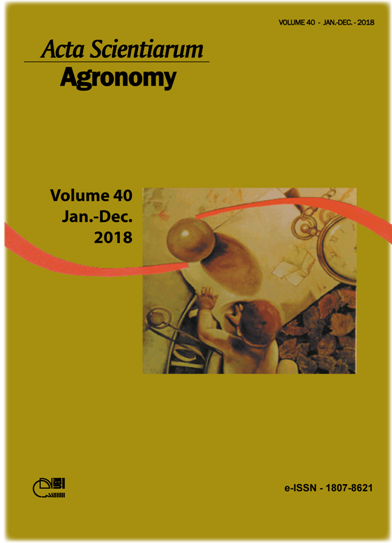<b>Chromium accumulation in maize and cowpea after successive applications of composted tannery sludge
Resumo
Chromium (Cr) accumulation in soil and plants has been reported after successive applications of tannery sludge, which is a matter of concern because Cr can promote environmental contamination and affect the food chain. In this study, we evaluated the growth of and Cr accumulation in maize and cowpea after seven years of consecutive applications of composted tannery sludge (CTS) under field conditions. The experiment consisted of application of CTS at five levels: 0 (control), 2.5, 5, 10, and 20 Mg ha-1 (dry basis). The growth of and Cr accumulation in maize and cowpea were evaluated at 75 and 65 days after plant emergence, respectively. CTS application increased the shoot biomass of maize and cowpea. Accumulation of Cr was similar for both plant species, with higher accumulation in roots. However, Cr accumulation in grains differed as the CTS doses increased; cowpea accumulated more Cr while maize did not accumulate more Cr in grains with higher CTS doses. In conclusion, application of CTS led to higher growth of maize and cowpea plants, and both species exhibited similar Cr accumulation in roots and shoots.
Downloads
DECLARAÇÃO DE ORIGINALIDADE E DIREITOS AUTORAIS
Declaro que o presente artigo é original, não tendo sido submetido à publicação em qualquer outro periódico nacional ou internacional, quer seja em parte ou em sua totalidade.
Os direitos autorais pertencem exclusivamente aos autores. Os direitos de licenciamento utilizados pelo periódico é a licença Creative Commons Attribution 4.0 (CC BY 4.0): são permitidos o compartilhamento (cópia e distribuição do material em qualqer meio ou formato) e adaptação (remix, transformação e criação de material a partir do conteúdo assim licenciado para quaisquer fins, inclusive comerciais.
Recomenda-se a leitura desse link para maiores informações sobre o tema: fornecimento de créditos e referências de forma correta, entre outros detalhes cruciais para uso adequado do material licenciado.




















































